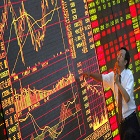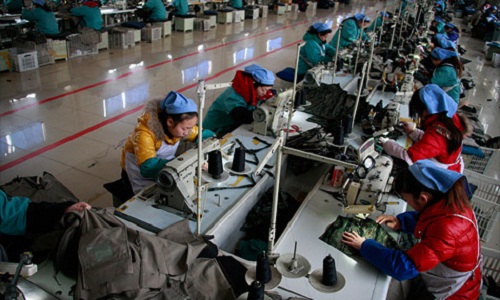"The report says, economic growth in South Asia is projected to strengthen in 2016-17, contingent upon steady progress on domestic policy reforms. Aggregate GDP is expected to grow by 6.7 per cent in 2016 and 7 per cent in 2017, up from an estimated growth of 6 per cent in 2015. The improved outlook is likely to be broad-based. In most economies, including Bangladesh, India, Pakistan and Sri Lanka, strong private consumption will remain the major driver of growth, offsetting relatively tight fiscal policies and weak exports."

The United Nations World Economic Situation and Prospects 2016 report projected South and East Asia to remain the world’s most dynamic and fastest-growing region in 2016/17, despite the recent economic slowdown. The UN report said, as the world economy continues to face considerable headwinds, the external environment for most economies in the region will remain challenging. In 2015, sharply lower commodity prices, weak trade activity, large capital outflows and increased financial market volatility weighed on aggregate growth, which fell to the lowest level since 2001. Aggregate growth in East and South Asia is forecasted to pick up slightly from 5.7 per cent in 2015 to 5.8 per cent in both 2016 and 2017 amid a modest improvement in global growth.

According to the report, a key risk to the regional outlook is a sharper- than- expected slowdown of the Chinese economy, which would negatively impact trade and investment flows in East Asia. Another risk factor is related to the monetary policy normalization in the United States, which could lead to renewed financial turmoil or a tightening of liquidity conditions across the region.
Growth in South Asia to strengthen, led by India
The report says, economic growth in South Asia is projected to strengthen in 2016-17, contingent upon steady progress on domestic policy reforms. Aggregate GDP is expected to grow by 6.7 per cent in 2016 and 7 per cent in 2017, up from an estimated growth of 6 per cent in 2015. The improved outlook is likely to be broad-based. In most economies, including Bangladesh, India, Pakistan and Sri Lanka, strong private consumption will remain the major driver of growth, offsetting relatively tight fiscal policies and weak exports. Some country-specific factors, such as the lifting of international sanctions against the Islamic Republic of Iran and reconstruction spending in Nepal, are also expected to support economic activity during the outlook period.
India’s economy, which accounts for over 70 per cent of South Asia’s GDP, is projected to grow by 7.3 per cent in 2016 and 7.5 per cent in 2017, slightly up from an estimated 7.2 per cent in 2015. As in other countries of the sub-region, the mac¬roeconomic environment in India has improved over the past two years, helped by the sharp decline in the prices of oil, metals and food.
As a net oil-importing region, South Asia has seen reduced inflationary pressures. Average consumer price inflation slowed from 8.2 per cent in 2014 to 6.2 per cent in 2015, the lowest level in more than a decade. Upward price pressures are expected to remain muted in the short run. Amid lower inflation, monetary policy has been loosened in several economies, most notably India. While room for further easing is relatively limited, monetary policy is projected to remain accommodative in most countries.
Budget deficits in most South Asian economies are expected to further moderate gradually in the wake of low oil prices, stronger economic activity and rationalization of fuel subsidies. Nonetheless, fiscal positions remain fundamentally weak and further reforms are needed to enhance the fiscal space.
East Asia projected to see steady growth
The report suggests, East Asia is forecast to see solid Gross Domestic Product (GDP) growth of 5.6 per cent in both 2016 and 2017 – about the same rate as in 2015, but significantly below the average of 6.3 per cent recorded in 2012-14. Further moderation in China’s growth is expected to be offset by a pickup in activity in some other large economies such as Hong Kong Special Administrative Region of China, Indonesia, Taiwan Province of China and Thailand. Given protracted weak demand in most developed countries and global financial market uncertainty, East Asia’s economies will continue to rely on domestic and regional sources of growth, including more expansionary fiscal policies.
However, economic growth in China is expected to further ease from an estimated 6.8 per cent in 2015 to 6.4 per cent in 2016 as the economy undergoes a structural transformation towards a more balanced and sustainable growth path.
The economies of Taiwan Province of China and Hong Kong Special Administrative Region of China have posted weak export performances over the past year. For both economies, a pick-up in exports and steady private consumption growth are expected to drive moderate growth recoveries in 2016/17. Among the bright spots in the region have been the economies of Myanmar and Vietnam, where growth-supporting factors, such as new investment and strong consumer spending, are projected to remain in place.












